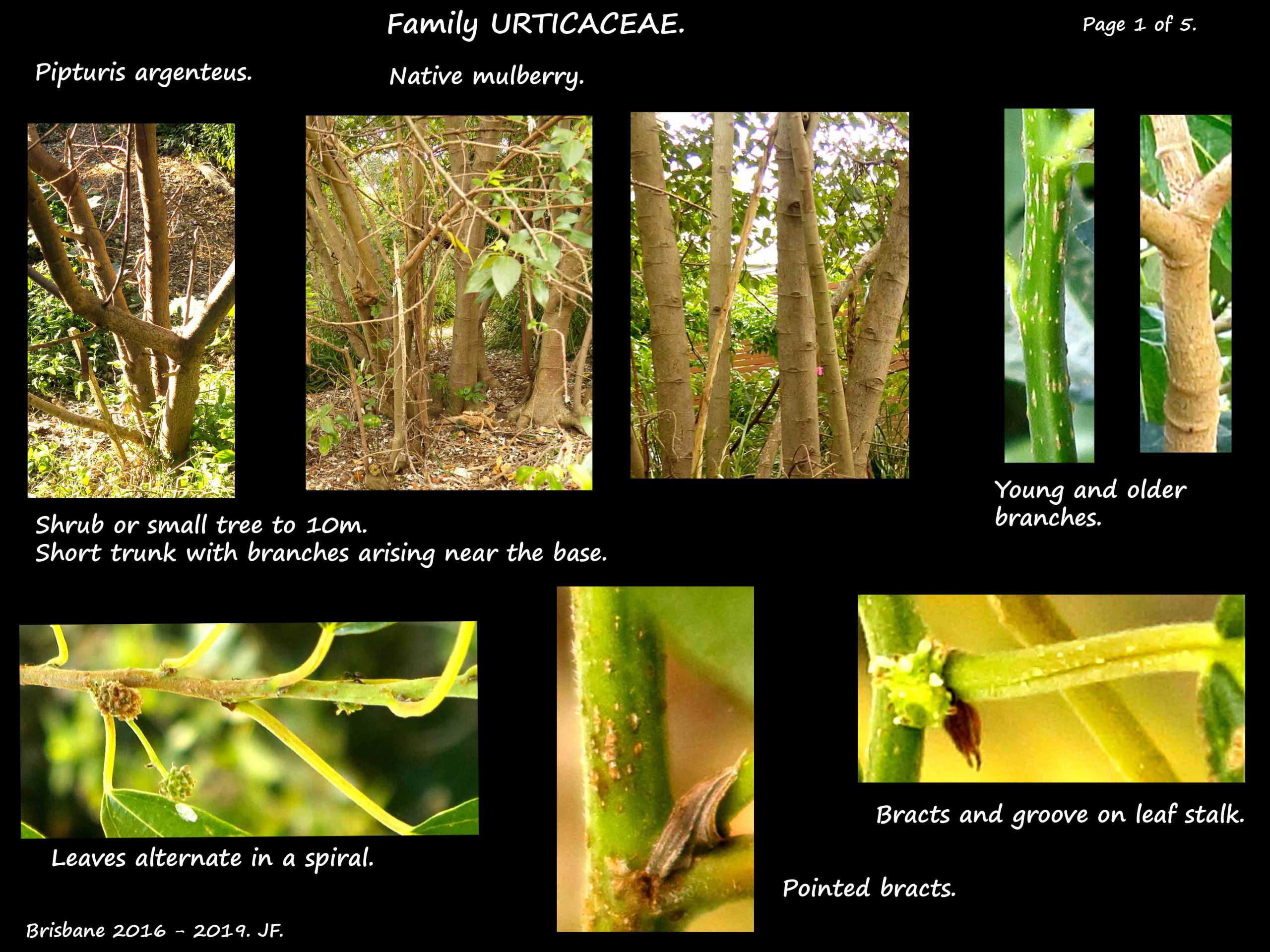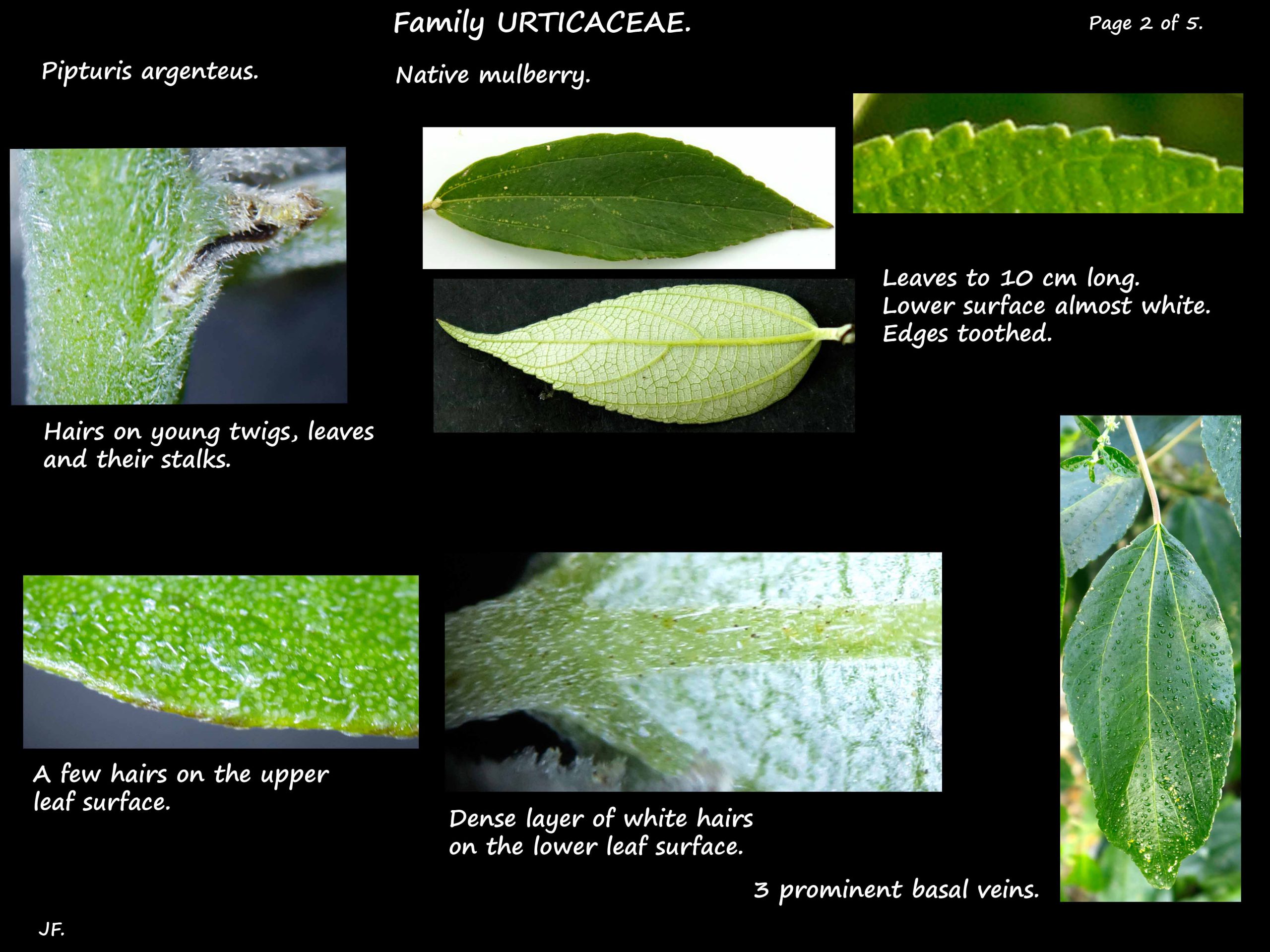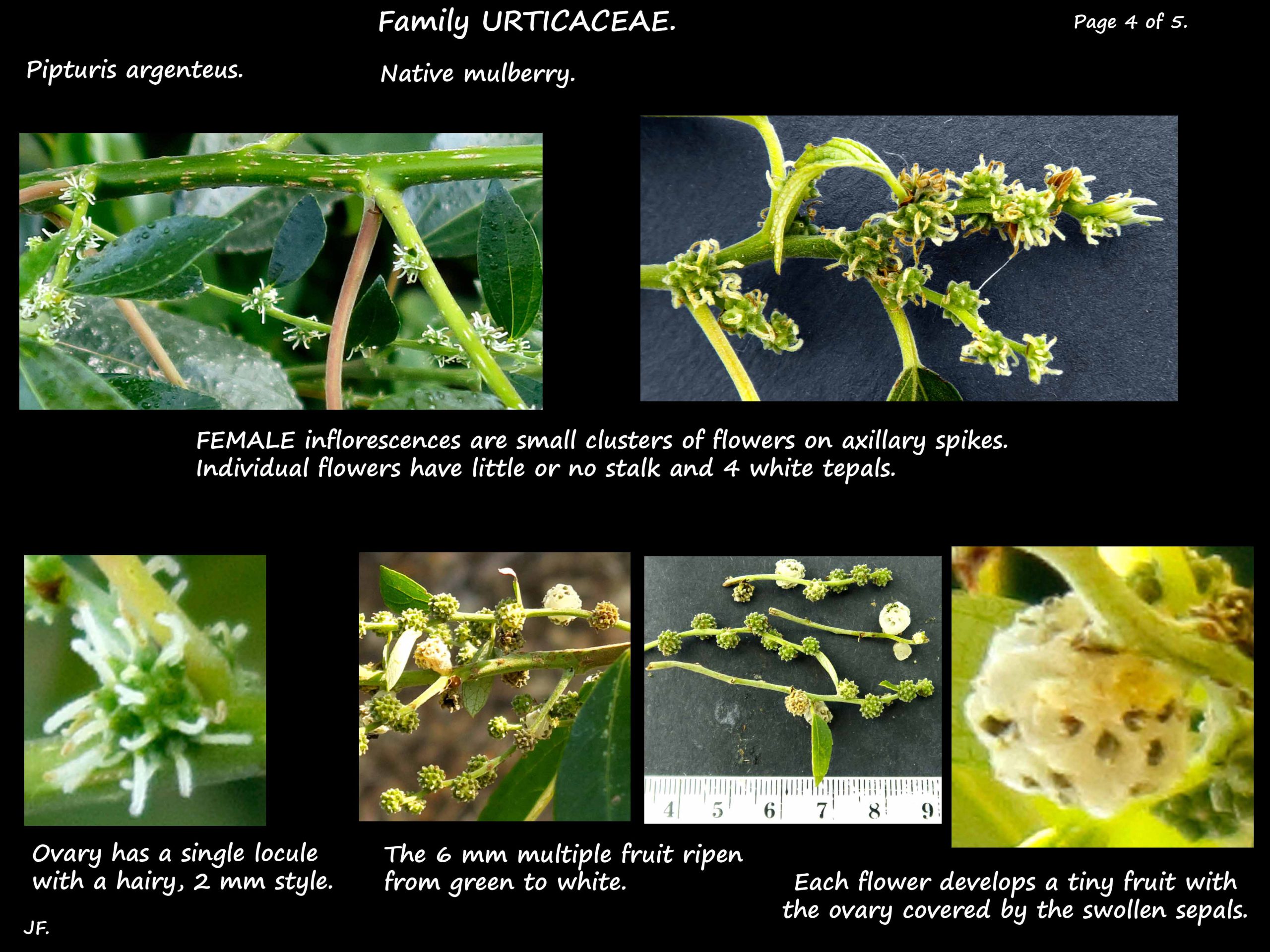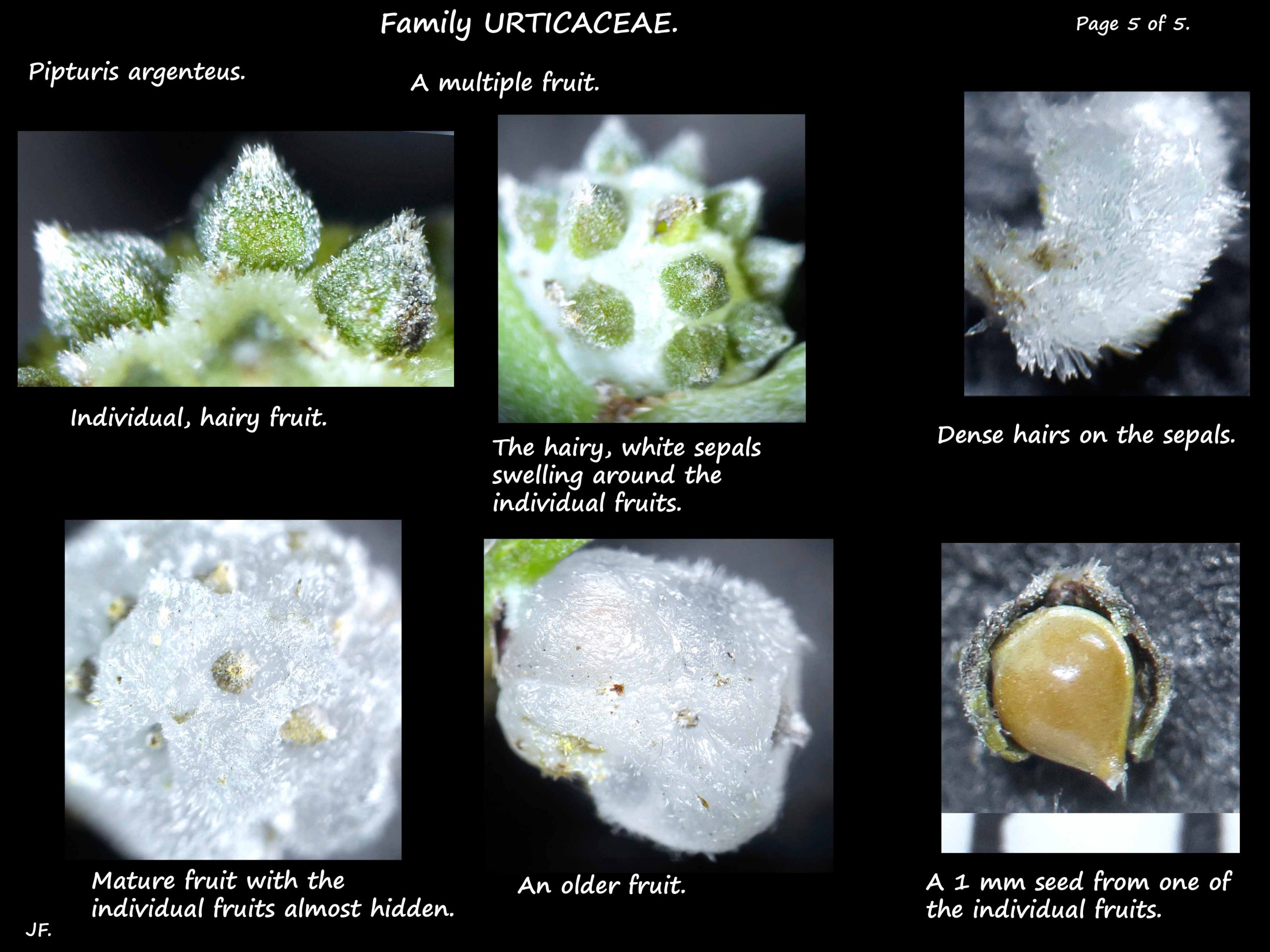Pipturus argenteus – Native Mulberry.
Family Urticaceae.
Native to northern Queensland it is known as the Native or White Mulberry.
Synonyms include Pipturus velutinus and Urtica argentea.
A fast growing, straggly shrub or small tree up to 10 m high.
Branches arise near the base of the short, cylindrical trunk.
Young twigs, petioles and leaves are covered in white hairs.
Trees are evergreen and reasonably drought tolerant.
Leaves, on petioles and up to 10 cm long, are alternately arranged in a spiral.
The stipules are a few mms long with pointed tips.
The elliptic to ovate leaf blades are mid to deep green above.
The lower surface is almost white due to a dense layer of hairs.
The edges have small teeth.
The 3 basal lateral veins are the most prominent.
Male and female flowers, in axillary inflorescences, are on separate plants.
The white flowers are in globular clusters.
Male flowers have a perianth of 4 tepals only 1 to 2 mm long.
They are sometimes described as having 4 sepals and no petals.
There are 4 stamens opposite, and longer than, the sepals.
Anthers open via longitudinal slits.
There is a rudimentary ovary (a pistillode).
Female flowers occur in clusters along a short stem.
Individual flowers have a short or no stem.
There are 4 tepals (or 4 sepals and no petals).
They are sometimes unequal and their bases are fused.
The ovary is reduced to 1 carpel with a single locule and 1 ovule.
Styles are about 2 mm long and hairy.
The fruit are globular, about 6 mm across and ripen from green to white.
Each multiple fruit contains all the individual, 1 mm fruit formed by each flower in the inflorescence.
The white flesh develops from the swollen perianth.
The whole fruit is covered in short, white hairs.
Pipturis (Family Urticaceae) and Morus (mulberries in Family Moraceae) are very similar.
They are both in the Order Rosales and some suggest the 2 families should be united.
J.F.






